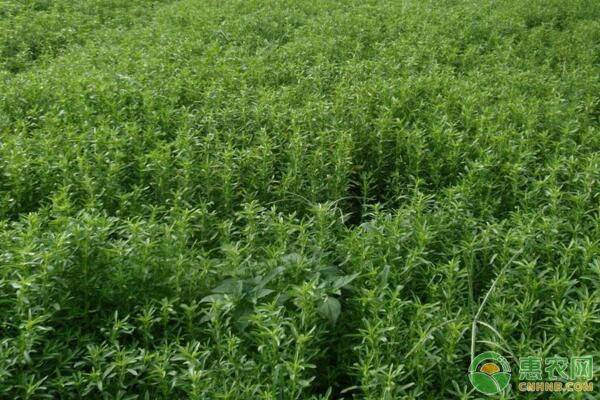Stevia is a perennial herb of the Asteraceae family, Stevia, with a height of 1-1.3 m, hypertrophied roots, upright stems, lignified at the base, tender upper part, light purple red or white at the base of the corolla, linearly thin fruit, flowering in July-September, fruit period from September to November. The sugar extracted from stevia from its leaves has the characteristics of high sweetness and low calorie, and is often used in food and beverage, medicine and wine making. Today, I will talk about the characteristics of stevia, cultivation technology and pest control measures.

First, the characteristics
1. Stevia has wide adaptability, the soil requirements are not strict, and the cultivation place is fertile and moist and the sandy loam soil with convenient drainage and irrigation is better.
2. Stevia loves temperature, is resistant to moisture and drought, and the most suitable temperature for growth is 20-25 degrees.
3. Stevia is a short-day plant, and if the light is too long, it cannot flower and bear fruit normally, so it needs to be treated with short daylight.
Second, the main points of cultivation technology
1. Seedlings
(1) Sow seeds from late March to early April, remove the seed crown hairs before sowing, and soak the seeds with 50% carbendazim 250 times liquid for 12 hours, and then dry to sow.
(2) The seedbed is flattened and finely crushed, and decomposed organic fertilizer is applied when preparing the land, and the seedbed soil is sprayed with 50% dixone 500 times liquid for disinfection treatment.
(3) When sowing seeds, the seeds are directly and evenly spread on the furrow surface, and then lightly pressed with a wooden board to make it closely bonded with the soil.
(4) Water in time after sowing, and cover the temperature with a small plastic arch.
(5) After 5-7 days of emergence, pay attention to controlling the temperature and humidity in the arch shed. The air release measures are adopted to control the temperature in the range of 20-25 degrees.
(6) When the seedlings grow 4 true leaves, start to release the wind to refine the seedlings, and when 6 to 8 true leaves grow, they can be transplanted to the field.
2. Field management
(1) Field planting is carried out in mid-to-late May.
(2) Before planting, apply organic fertilizer to the ditch strip and apply 20 kg of compound fertilizer per mu.
(3) The row spacing of the plants is 15 cm×50 cm, and 8500 to 10000 plants are planted per mu.
(4) After slowing down the seedlings, when the seedlings are 15 cm tall, the tips are plucked to promote their multi-branching and increase the yield.
(5) The first topdressing is carried out 15 days after the slow seedling, and the second topdressing is carried out during the rapid growth period of the plant (early July). Each time 15 kg of urea and 15 kg of potassium sulfate are applied per mu, and then spray foliar fertilizer every 15 days, and fertilizers such as Gaomei Shi, American Shenshui, and Ginseng Mei brand yield increaser can be used.
3. Pest control
(1) The main diseases and insect pests of stevia are white silk disease, standing blight, leaf spot disease, black spot disease, aphids, corn borer, soybean heartworm, grub, slug, slug, etc.
(2) White silk disease prevention and control: with 50% carbendazim wettable powder 700 times liquid stem base spray, or with 50% methyl tolbuzin 800 times liquid spray control.
(3) Vertical blight control: spray prevention and control with 700 times of bacillus or carbendazim liquid, or spray with 5 million units of agricultural streptomycin with 15 to 25 kg of water, or with 70% dixone 250 times liquid control.
(4) Prevention and treatment of leaf spot disease and black spot disease: spray prevention and control with bacillus clear or methyl tolbucin 1000 times liquid or agricultural streptomycin.
(5) Aphid control: spray control with 800 times oxidized Leguo liquid.
(6) Corn borer, soybean heartworm control: spray control with 2000 times the liquid or 1000 times the liquid of the enemy.
(7) Underground pest control: When preparing land in the field, 1.5 kg of furandan per mu is applied for control.
4. Harvest and dry
Harvest during the budding period (around mid-September) and the harvest is carried out on sunny days.